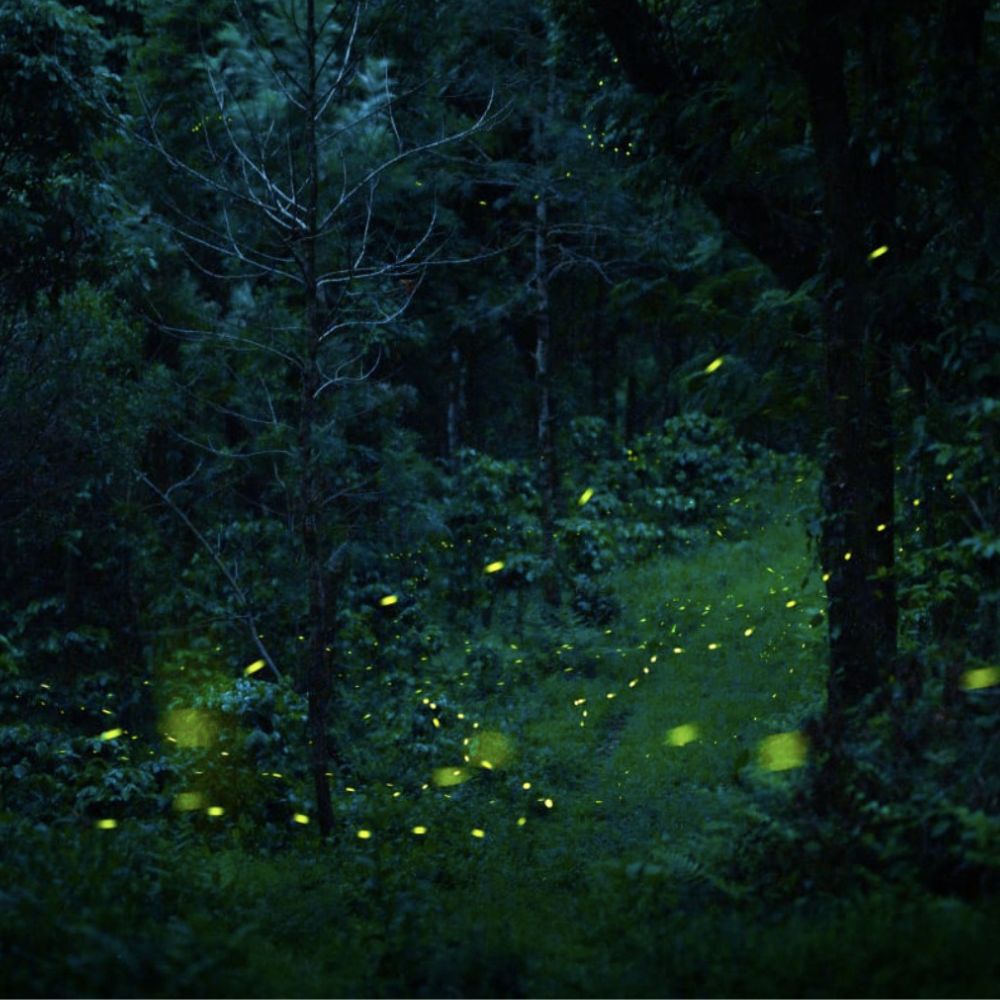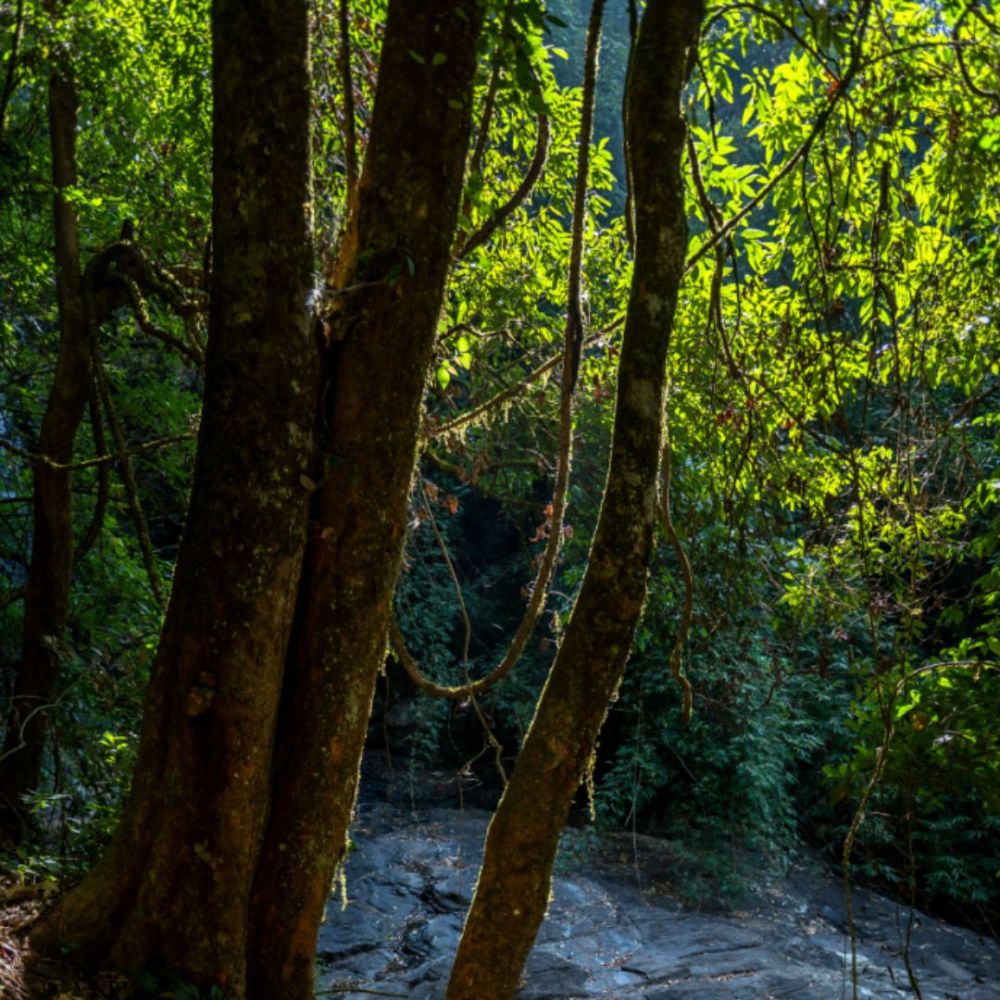What is a Collective?

A ‘collective’ is a group of individuals who come together with a single objective. At Beforest that objective is to live sustainably on a single, large, expansive landscape. It allows us to build lakes, forest patches and ecological zones to achieve multiple microclimates that help in growing a ‘food forest’ to fulfill the needs of the community dependent on that landscape.
To ensure this, every Beforest Collective follows a list of essentials.
100+ acre Landscapes
Access diverse natural features to channel impact at scale.
Eco-sensitive Zoning
Dividing the landscape into natural, economic & mixed zones to streamline ecosystem activities on the landscape.
Construction Footprint up to 15%
Minimising human impact and encouraging interaction with nature.
Farming, Conservation & Restoration
Reversing the impact of decades of land degradation & deforestation through permaculture farming techniques & biodiversity conservation.
Collective Ownership
Driving the growth from the support of a member-led community.
Why a Collective?RE-IMAGINING COMMUNITIES TO REGENRATE LANDSCAPES
RE-IMAGINING COMMUNITIES TO REGENRATE LANDSCAPES

The need to connect with nature is undeniable in urban audiences. But running a farm comes with a lot of effort and commitment. After the initial years of enthusiasm, most farm owners lose interest (or patience), leaving the farms in limbo. We saw this repeat several times before we set out to devise a holistic solution to address this innate need.
If we wish to go far, we must walk together.
Collaboration and collective effort are essential to making a significant impact. While our motivation to address environmental challenges and live in harmony with nature is strong, achieving this goal is not a simple task and certainly not a one-man job. Therefore, we set out to form ‘Collectives’ where more people who shared our vision of a forest-friendly lifestyle can come together to make it happen. This community of members not only drives the initiation of a 100+ acre collective through crowd-funding but also walks hand-in-hand on every step of the journey, empowering each other and everyone else linked to them.
With our support in the form of management of the collectively-owned landscape and with collaborators such as local farmers, wildlife conservationists, permaculture farm planners, naturalists, architects & engineers, landscape managers and more, the member community can create a much larger impact than any of them can achieve alone. By pooling individual resources, knowledge and skills, the community is much more than the sum of its parts - which is precisely what they need to bring back the lost forests, rewild synthesized landscapes and regain the quality of life reminiscent of simpler times.
Why Forest Friendly Collectives?
FORESTS ARE IN PERIL

Over the last five decades, central and south India have lost 61% of their forest cover. The reason for this rapid depletion of forests is expanding agricultural activities. We analyzed modern farming practices before finding solutions that can support a community of up to 100 families in a basic Collective. Urbanization has pushed farming further away from cities, encroaching on forest lands and causing landscape degradation with severe repercussions.
Average loss of soil carbon content
Litres of water access lost per acre annually
But farming is necessary for us to survive, and so are forests.
To tackle this pressing issue, we came up with the concept of Collectives.
Our Unique Approach to Forming a Collective
HOW IT WORKS
Building the House of Commons
It was important to take a holistic approach to fulfilling our basic needs for living without slipping into the tunnel vision of merely the farm produce, the homes and the lifestyle experiences.
A stable and healthy supply of food, comfortable homes to live in and a self-sufficient lifestyle are built on the foundation of many other things such as clean water, clean air, soil quality, abundant grasslands, wastewater recycling, a close-knit community, access to various services, biodiversity, skill development, learning practices and a lot more which have been historically considered free of cost and abundant. However, these are all limited resources today.

Seeking Permanent Solutions
To achieve true sustainability, we must build a strong foundation of the commons. Focusing solely on eco-friendly farming and housing is not enough and is unfit for the long haul. Our aim is a self-sufficient, self-replicating ecosystem for current and future generations.
Creating Unprecedented Change
While natural farming and earth-friendly homes have precedents, establishing the commons at scale is a novel endeavour. However, there needs to be a thread that ties all these commons together - where we can direct all our efforts to see a significant change across multiple avenues.
Soil is that connecting thread.

Focus on Soil Health for a Sustainable Lifestyle
Studies show that a 1% increase in soil carbon content can sequester carbon emissions of the last 40 years and provide 700,000 litres of annual water access per acre. Building the House of Commons is intrinsically tied to increasing soil carbon content gradually. Soil health is about more than just its type; it encompasses microbial life and biodiversity. Soil building on a large scale seemed to have worked on a small scale so far. Hence, we are now taking our learnings from smaller experiments to a community level.
How Does the Collective Model Work?
Individual & Collective Ownership
Each collective member buys a portion of the farmland as part of a community that together purchases the large combined landscape (~100+ acres). Members can build a home here too, turning it into a “village” of their own. The idea is to make these villages (or Collectives) self-sustaining through permaculture, water management processes, polycultures and more. The scale helps lower risks and costs, use water and other resources efficiently, and engage with the market on better terms.
Blurring Edges gives us The Edge

Harnessing the Power of Scale
A larger landscape allows us to build lakes, numerous check dams, low-intervention wilderness zones, etc which are simply not possible on a smaller piece of land.
Simplified Management
Water management, power generation, processing of produce, etc - all can be managed using combined resources.
Efficient Landscape Planning
Larger landscape comes with varied topography and soil types. Produce can be planned according to what the soil allows.
Diversity of Produce
All eggs are never in one basket. The larger landscape allows more resilience as a food forest. Harvesting diverse produce also shields us from market vagaries.
Growing a Lifestyle
HOW COLLECTIVES CAN CHANGE THE WORLD
Imagine your day starting with an orchestra of birdcalls. Aren’t they the perfect alarm! Energise for the day with a morning walk along the trails of the wilderness zone or a workout in the food production zone.
On the way back, pick up some fresh berries for a morning smoothie from the edible pathways. If you are not one for a workout, you may indulge in deep thinking at your favourite introspection points. Find an ergonomic stone that will serve as your work desk for the day under the shade of a mango tree near one of the water bodies. Take a break at noon and refresh yourself with a farm-to-table lunch. An afternoon siesta, perhaps?
Let the inner poet come to life. There is nothing like a sunset to connect with those emotions. Have a nice quiet dinner as the birds settle down and denizens of the night come out.
Over 200 families have chosen this lifestyle in our farming collectives. You can too with Beforest.








